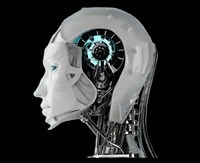The recently released EY report, 'Internet of Things: Human-machine interactions that unlock possibilities', indicates that media and entertainment (M&E) companies can capitalise on increased opportunities, as billions of devices are expected to be connected in the coming years.
They are well positioned to seize an early advantage as an enabler and receiver of IoT applications. The increasing sophistication of IoT sensors makes it possible for devices to read, gauge and understand consumers at unprecedented levels. According to the report, the M&E industry is already using categories of sensors such as inertial, motion and image sensors used in animation, gaming, video images, camera stabilisation, sports and 3D. This is opening up new, intimate entertainment experiences for consumers.
Myhan Naidoo, Africa Sector Leader for Technology, Media & Telecommunications at EY says, “Whilst numerous opportunities exist for IoT in M&E, it is important for M&E companies to find the right balance between potential and necessity. IoT can enable an exceptional consumer experience; however, it can also have the opposite effect. To benefit fully from the potential of IoT, M&E companies need to take a customer-centric view when developing these strategies.”
One of the most anticipated benefits of IoT for marketers is its potential – using sensors – to unlock data on a person’s habits, preferences and most significantly, the context in which media is being consumed. Better data analytics will also address deficiencies in the current measurement system for media consumption, such as avoiding the duplication of unique users across platforms, and enhance what marketers know about their audiences.
“In an IoT world, media companies will be able to understand what a person is watching, as well as measure how, where, why and with whom consumers are viewing content. This level of insight provided by smart devices will allow M&E companies to deliver targeted advertising that is relevant to a person’s presence in real-time. IoT will not only improve the content experience for consumers, but it will also encourage the advertising industry to completely redefine its measure of success.”
Smart devices, smart data
If smart devices provide useful data to content providers that is perceived as non-intrusive and the resulting content experience correctly interprets consumers’ current readings (mood, need, intention) in real-time and then quickly respond to those needs with relevant and targeted advertising, the implications for improved brand loyalty could be vast.
For M&E companies to realise the full potential of IoT, they need to consider also the associated risks, including regulatory hurdles, legal precedents, intellectual property rights, lack of connectivity standards and lack of IoT scale to reach critical mass, the report finds. The biggest challenges are around privacy and cybersecurity. Protecting personal information is an issue that will become exponentially more difficult as IoT collects enormous amounts of data and connects more devices, software, machines and humans.
Naidoo concludes, “IoT is both disruptive and inevitable. As M&E companies are uniquely positioned to seize an early advantage given their position, as both an enabler of IoT and a receiver, this can catapult the M&E industry to find real value in its IoT investments.”
Click here to download the report PDF, and here for more information.

















































